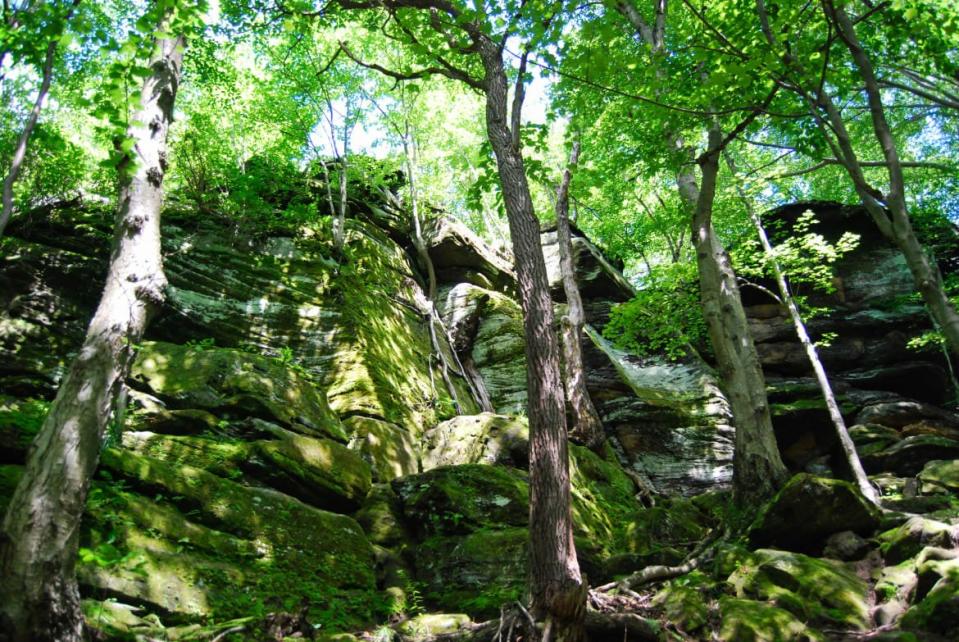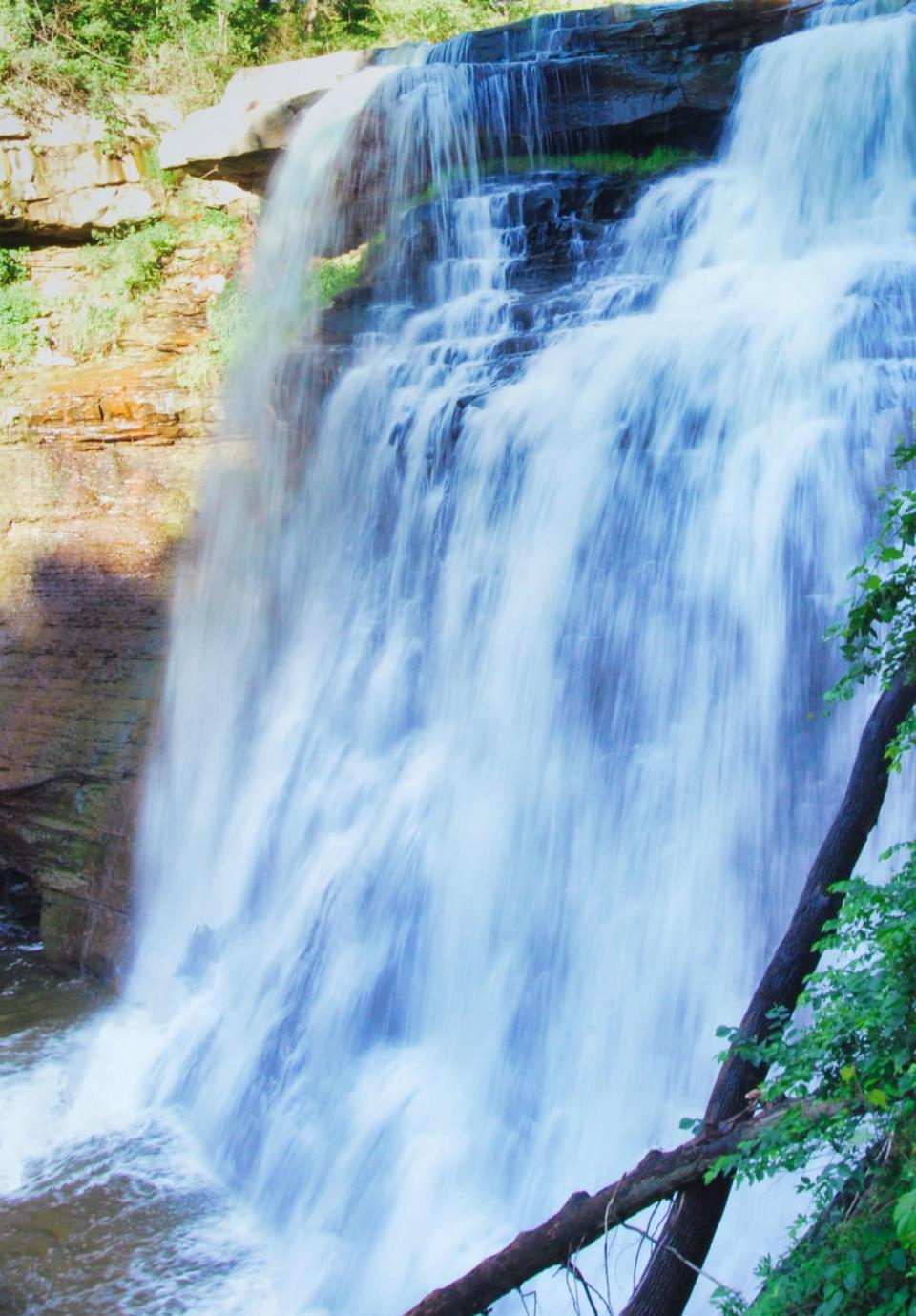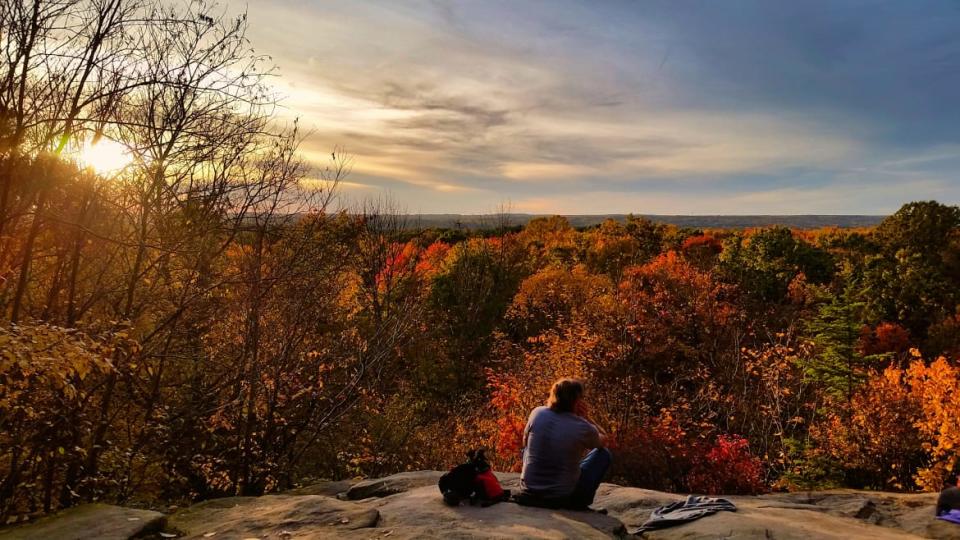This National Park You’ve Probably Never Heard of Is One of the Top 10 Most Visited

Ohio is more than the place where national media drop into diners to interview swing state voters (because, apparently, we Ohioans are only found in diners). It’s more than a Pencil Sharpener Museum or the home of the World’s Largest Washboard—yes, those exist here. It’s also home to a robust world of outdoors recreation, like central Ohio’s Hocking Hills or the just named seventh-most-visited national park of 2020: Cuyahoga Valley National Park.
Tucked away just south of Cleveland, Cuyahoga frequently gets overlooked in stories about national parks in deference to the older giants with bigger name-brand recognition, like Great Smoky Mountains National Park or Yellowstone. Of course, on a list like this, no national park can compete with Great Smoky Mountains, which has held the No. 1 slot since 1944.
Still, even Yosemite didn’t make the top 10 list last year.
Cuyahoga, however, remains one of the country’s most-visited national parks and its place in 2020’s top 10 isn’t as new as some outlets suggest. Statistics show that the roughly 32,950 acre park has taken a slot on the top 10 most-visited list 12 out of 21 times since it officially became a national park in 2000, even securing the number three slot in 2004. The last 9 years it quietly held the 11 to 13 spots, but never left the top 15.
Why the shift for Cuyahoga last year?
Cuyahoga might have (in part) the pandemic and ease of access to thank for the jump back into the coveted top 10.
Outdoor recreation received a big boost last year, with park usage across Ohio sometimes increasing upwards of 60 percent. Major cities within the state—and even a few outside of it—are no more than 3.5 hours drive from Cuyahoga, and with a population of almost 12 million people in Ohio, this made the park an attractive weekend getaway.
It’s appeal, however, goes well beyond a pandemic convenience—and as an Ohioan, I’ll defend this to my death.
This is a park with hiking, biking, skiing, kayaking, horseback riding, waterfalls, and wildlife observation. Every year I make multiple trips to Cuyahoga to hike or bike the trails and it never disappoints.
There are 125 miles of hiking trails in the park, all with varying lengths. Anyone’s first trip to the park should include at least two, shorter, and widely popular trail systems—The Ledges and Kendall Lake Trails.

"The glowing lichen of The Ledges at Cuyahoga Valley National Park"
The Ledges is an iconic trail that can be combined with other area trails to get several miles of hiking. The Ledges primary trail, however, is a stunning must-see 2.2 mile sandstone cliff face with an elevated view of the park. During the year, The Ledges glows in an effervescent green due to lichen growing on the rock face. In the fall, The Ledges is an amphitheater for fall colors cascading across Cuyahoga.
Kendall Lake trails is a combination of trails that include a beautiful lake and cross country trail hiking, as well as the nicely forested, rocky, and hilly, Salt Run.
For the cyclist, The Ohio & Erie Canal Towpath Trail runs through the center of the park, and is a wonderful 19.5-mile multi-use trail and a favorite for hikers and cyclists. Along this route are opportunities for quick access to ice cream, see Cuyahoga’s visitor’s center in Boston Mills,a summer favorite—Szalay's Farm & Market—or stop in Peninsula, where there are restaurants and bed and breakfasts As part of the Bike or Hike Aboard program, you can take the Towpath Trail one way and pick up a train ride back on the Cuyahoga Valley Scenic Railroad. (You can rent a bike at Century Cycles.)
The Towpath trail connects to the longer Ohio to Erie Trail network, which totals 326 miles and crosses the entire state. This is also an important connection for the longer and ambitious Great American Rail Trail, which is being developed by Rails to Trails Conservancy for a coast-to-coast bike trail.
There are also extensive mountain biking trails in the park, including the The East Rim Trail System, which comes with its own beautiful views, diverse terrain, and obstacles. It’s a favorite for trail runners.
If you’re into waterfalls—and who isn’t, really?—they are found in all sizes throughout the park, but the real showstopper is the 60-foot Brandywine Falls, which is also surrounded by several places to hike and is easily accessed by car or bike.

"Brandywine Falls at Cuyahoga Valley National Park"
And lastly, winter sports are also an important draw to Cuyahoga, where you can snowshoe, sled, cross-country ski, and ice fish, and at the Boston Mills and Brandywine Ski Resorts there is downhill skiing and snowboarding. Yes, it is not necessarily the elevation and level of shredding you could get at Banff, but it keeps the park a year-round draw in the state.
But it’s not just what’s in the park that makes it appealing.
The region surrounding the park makes it popular in any non-pandemic year, including its ease of access from Cleveland, which has undergone a destination renaissance in the last few decades, or that its only an hours drive from places like, The Mohicans Treehouse Resort, if sleeping in tree canopies is on your bucket list. (Ohio has had a treehouse growth in recent years.)
In other words, there is no shortage of things to do in the park.
And yet, while this is enough to visit Cuyahoga Valley National park, there is another reason: it is a park that almost wasn’t.
The status of Cuyahoga as a national park came at the turn of the millennium, but the land was designated as a national recreation area in 1974 by President Gerald Ford. Rising industry along the Cuyahoga River into Cleveland had polluted the area so badly that the river used to catch fire. (Yes, you read that correctly.)
What happened?
Roughly 13,000 years ago, paleolithic first peoples hunted mammoths and mastodons in the region. Only 300 years ago, you could still find black bears and bison. Less than 200 years ago, when Cleveland was on track to becoming the country’s fifth largest city, industry arrived and dumped chemicals, neighborhoods were being built, pushing animals to the south, and extensive pollution made it impossible to even eat the fish caught in the river.
Cleveland realized there had to be changes and those began in the 1970s.

"Cuyahoga Valley National Park from the top of The Ledges in the Fall."
Just over 50 years later, Cuyahoga Valley National Park represents one of the most-successful attempts at rewilding in Ohio. The fish are safe to eat, the river is free-flowing again, as dams have been removed making watersports possible, and slowly, though still rarely, black bears are making their way back into the area. It is a place where wildlife can breathe freely again.
Cuyahoga, in other words, is more than a national park that made it back to the top 10 list. It’s more than a place to stop while passing on the toll road. It embodies a fascinating Ohio universe that demands that you keep coming back—even when there isn’t a pandemic.
Get our top stories in your inbox every day. Sign up now!
Daily Beast Membership: Beast Inside goes deeper on the stories that matter to you. Learn more.

 Yahoo Sports
Yahoo Sports 